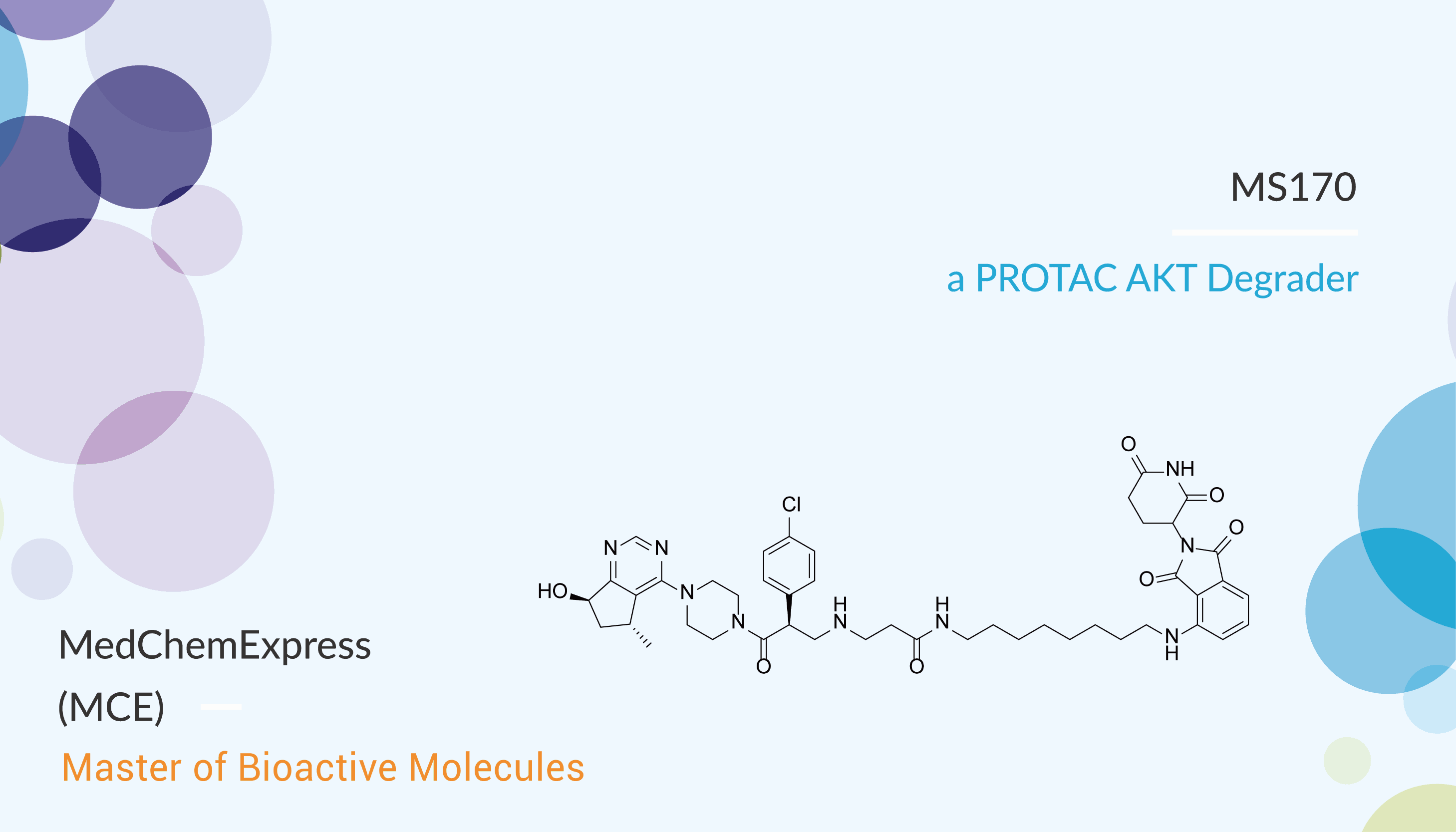The alternative name of serine/threonine kinase AKT is protein kinase B (PKB). Three closely related genes in humans: AKT1 (PKB-α), AKT2 (PKB-β), and AKT3 (PKB-γ) encode PKB. AKT is an important component of the PI3K/AKT/mammalian target of rapamycin (m-TOR) signaling pathway. It also regulates fundamental cellular and physiological processes, such as cell growth and survival, apoptosis, transcription, migration, and protein synthesis. Meanwhile, PI3K/AKT/m-TOR signaling is one of the most frequently dysregulated pathway in the initiation and propagation of human cancers.
PROTACs are heterobifunctional small molecules that engage target proteins and E3 ubiquitin ligases. It induces polyubiquitination and subsequent degradation of the target proteins at the proteasome. Morever, PROTACs are able to temporally eliminate both catalytic and noncatalytic (such as scaffolding) functions of the targeted enzymes.
In this article, we will introduce a CRBN-recruiting degrader MS1750.
MS1750 is the novel and potent AKT proteolysis targeting chimera (PROTAC) degrader.

MS1750 is a potent, selective, and orally active AKT kinase degrader with Kds of AKT1, AKT2, and AKT3 of 1.3, 77, and 6.5 nM, respectively. This compound selectively induces robust AKT protein degradation, inhibits downstream signaling, and suppresses cancer cell proliferation. It also exhibits good plasma exposure levels in vivo.
In the evaluation of CRBN-recruiting AKT degraders, MS1750 is the most effective AKT degrader without a “hook effect” and is also the most effective in inhibiting the downstream signaling, P-PRAS40 and P-S6. MS1750 concentration- and time-dependently induces T-AKT and P-AKT degradation (>95% degradation at 1 μM). In colony formation assay to detect cell growth inhibition effect, MS1750 exhibits potent inhibitory effect on BT474 cells and also suppresses the growth in multiple human cancer cell lines in the evaluation of antiproliferative activities.
In conclusion, MS1750 is a CRBN-recruiting degrader of AKT which could provide an effective study for numerous human cancers.
Reference:
Yu X, et al. J Med Chem. 2021;64(24):18054-18081.